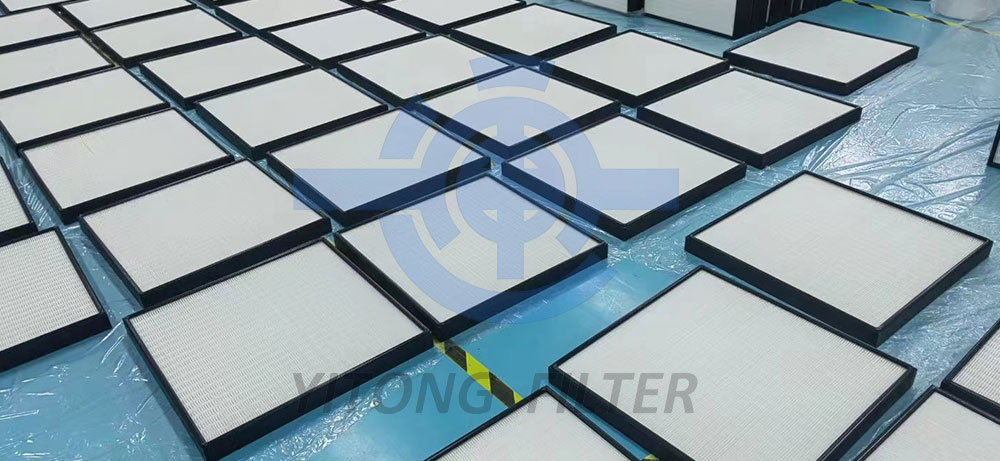 September 03, 2024
September 03, 2024
A HEPA filter, which stands for High-Efficiency Particulate Air filter, is a type of mechanical air filter that works by forcing air through a fine mesh that traps harmful particles. These particles can include dust mites, pollen, pet dander, mold spores, and even certain bacteria and viruses. Originally developed during World War II to prevent the spread of radioactive contaminants, HEPA filters have since been adapted for use in a variety of settings, from household air purifiers to industrial and medical applications.

True HEPA filters are defined by their ability to capture at least 99.97% of airborne particles that are 0.3 microns in diameter. The size of 0.3 microns is often referred to as the most penetrating particle size (MPPS), which means it is the hardest size to capture. A True HEPA filter can trap smaller and larger particles with even greater efficiency. These filters are commonly used in environments where clean air is a priority, such as hospitals, laboratories, and homes. When a product is labeled as having a True HEPA filter, it means it meets the high standards set by the U.S. Department of Energy for air filtration.

HEPA 13 filters are part of a classification system established by the European standard EN 1822, which rates the performance of HEPA filters from HEPA 10 to HEPA 14. A HEPA 13 filter captures at least 99.95% of airborne particles that are as small as 0.1 microns in diameter, making it even more effective than True HEPA at capturing very fine particles. These filters are often used in environments that require a high level of air purity, such as pharmaceutical manufacturing, medical facilities, and cleanrooms where sensitive electronic equipment is made.
Filtration Efficiency: The primary difference lies in their efficiency. True HEPA filters capture 99.97% of particles at 0.3 microns, whereas HEPA 13 filters capture 99.95% of particles at 0.1 microns. Although the numerical difference seems small, HEPA 13 filters are slightly more effective at capturing ultrafine particles.
Particle Size: True HEPA filters are designed to focus on the 0.3-micron particle size, which is considered the most challenging to filter out. On the other hand, HEPA 13 filters can capture particles as small as 0.1 microns, making them more suitable for environments where ultrafine particle filtration is critical.
Standards and Certification: True HEPA filters typically adhere to standards set by the U.S. Department of Energy, ensuring a specific level of performance. HEPA 13 filters are certified based on European EN 1822 standards, which have their own criteria for measuring efficiency.
Applications: True HEPA filters are commonly used in consumer products, such as household air purifiers and vacuum cleaners, where a high level of air cleaning is needed, but the environment does not require the extreme standards of a cleanroom. HEPA 13 filters are used in more critical environments, such as hospitals, where the air quality must be exceptionally high to prevent contamination.
Pros: True HEPA filters are widely available and are highly effective at capturing common allergens and pollutants found in household environments. They provide an excellent balance of efficiency and cost, making them suitable for most everyday air purification needs.
Cons: While True HEPA filters are effective, they may not capture the smallest ultrafine particles as efficiently as HEPA h13 filters. This makes them less ideal for environments where ultrafine particle removal is crucial.
Pros: HEPA 13 filters offer a higher filtration efficiency, capturing smaller particles that True HEPA filters might miss. They are ideal for settings that require a higher level of air purity, such as hospitals and laboratories.
Cons: HEPA 13 filters can be more expensive than True HEPA filters due to their higher efficiency. Additionally, because they are denser, they may require more powerful fans to push air through them, leading to higher energy consumption and noise.
When deciding between a True HEPA filter and a HEPA 13 filter, consider the specific environment in which the filter will be used. For general household use, where the goal is to reduce common allergens and improve overall air quality, a True HEPA filter is usually sufficient and more cost-effective. However, for environments where the highest level of air purity is required, such as medical facilities, opting for a HEPA 13 filter might be the better choice despite the higher cost and energy consumption.

Conclusion
Both True HEPA and HEPA 13 filters offer effective solutions for improving air quality, but they cater to different needs. Understanding their differences can help you choose the right filter for your specific situation. Whether you are looking to keep your home free from allergens or require a sterile environment for sensitive work, there is a HEPA filter that can meet your needs. Always consider both efficiency and application to ensure you select the best air filtration system for your health and environment.
 May. 24, 2023
Install and Utilization of Air Filters in Chicken Coops
May. 24, 2023
Install and Utilization of Air Filters in Chicken Coops
 Jul. 10, 2023
Characteristics of High-temperature HEPA Filters
Jul. 10, 2023
Characteristics of High-temperature HEPA Filters
 Jan. 25, 2025
Panel Air Filters: An Essential Guide to Cleaner Air
Jan. 25, 2025
Panel Air Filters: An Essential Guide to Cleaner Air

